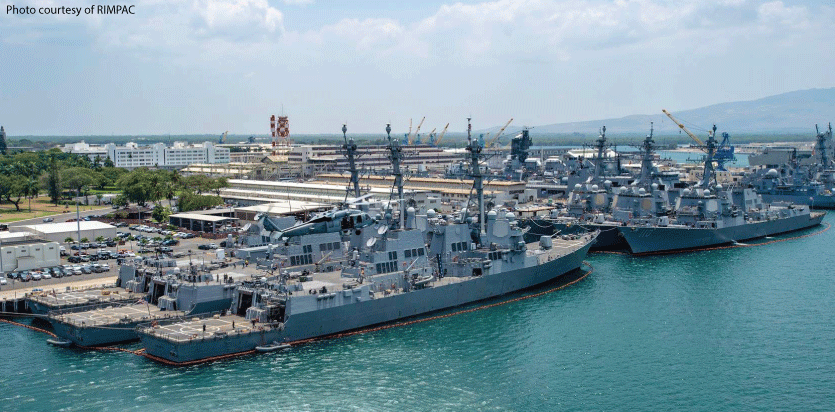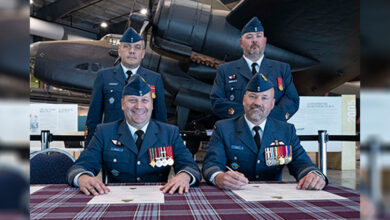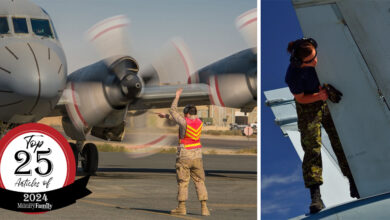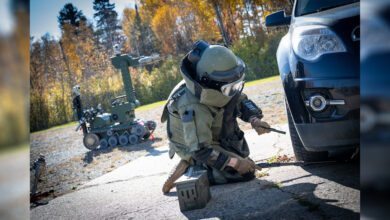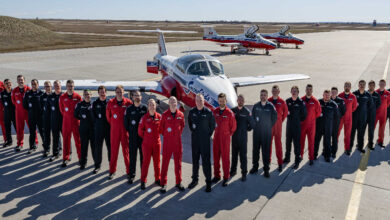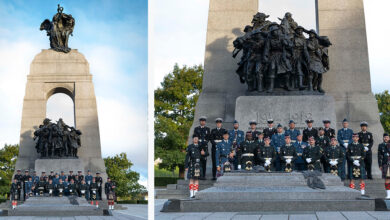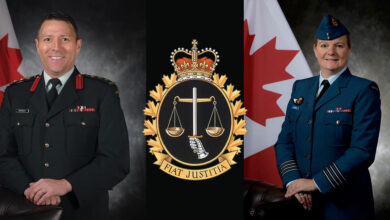Duty CallsUncategorized
Over 1,000 military personnel ship out for EX RIMPAC
Since its beginning in 1971, Exercise Rim of the Pacific (RIMPAC) has become the most extensive maritime military exercise. RIMPAC was run every year until 1974 when they changed it to every two years.
On June 27, over 1,000 sailors, soldiers, and pilots shipped out to the Hawaiian Islands and Southern California to take part in Exercise RIMPAC. While other nations have participated in RIMPAC, Canada, the United States, and Australia are the only three countries to have engaged since the beginning.
The Royal Canadian Navy (RCN) has contributed 675 members, including two frigates, one interim Auxiliary Oiler Replenishment ship, and two maritime coastal defence vessels.
• HMCS Vancouver
• HMCS Ottawa
• MV Asterix
• HMCS Yellowknife
• HMCS Whitehorse
The RCN has also provided divers and logistics and support personnel.
About 170 soldiers have also been deployed, including a dismounted Infantry company group from the 2nd Battalion, Royal 22nd Regiment. The Royal Canadian Air Force has contributed about 45 members, including a CP-140 Maritime Patrol Aircraft and a deployable mission support centre. There will be 42 personnel providing Command Support and 120 staff to work in headquarters and provide additional support. These include:
• Rear Admiral Bob Auchterlonie is the Deputy Commander Combined Task Force RIMPAC
• Captain (Navy) Matthew Coates is the Deputy Commander Combined Maritime Component Command
• Colonel Michael Atkins is the Deputy Commander Combined Air Component Command
• Colonel Dennis O’Reilly is the Combined Air Operations Centre Director
• Captain (Navy) Matthew Bowen is the Third Fleet Deputy Exercise, Director
The purpose of Exercise RIMPAC is to provide training opportunities for the different nations in enhancing the way the different forces work together, enhancing the way they work with other countries, improving the readiness for a broad range of possibilities for military operations, and strengthening military-to-military partnerships.
Canada has partaken in every RIMPAC since they began in 1971. Exercise RIMPAC works as a training opportunity for all CAF branches, every two years. The CAF members chosen for RIMPAC are plucked from any or all of the main CAF branches.
Canada’s main RIMPAC objectives include developing and enacting plans enabling the navy, army, and air force to operate as a joint force within a coalition of other nations; enhancing the CAF’s ability to conduct missions with other countries, fitting with Canada’s federal objectives; and developing skills and procedures designed to foster military skills, these include operability, readiness, communications with partners, and crisis response.
Exercise RIMPAC is conducted in three phases, Harbour Phase, Force Integration Training Phase, and Free Play Phase. Each stage provides the different nations with a variety of training opportunities, each one becoming more difficult.
Designed to strengthen professional and personal relationships between nations, military members will meet for face-to-face briefings, training, and detailed planning. In reaching this goal, the Harbour Phase allows members to get to know their colleagues, finalize plan details, and lay the foundation for professional and successful operations.
The Force Integration Phase develops the skills of the different units that take part, enabling them to operate at the task force level. It tests each nation’s abilities to perform in a robust command and control setting with the other countries, including a variety of live training at sea, underwater, on land, and in the air.
The final phase, which is the Free Play Phase, tests military skills in a realistic scenario. The scenarios become more intense as the stage progresses. All surface, submarine, air, and land threats will be covered to ensure operational readiness of all participating nations.
The last RIMPAC exercise took place in 2016 with more than 1,500 CAF members from the navy, army, and air force. The 1,000 Canadian Armed Forces (CAF) members will return on August 2.


